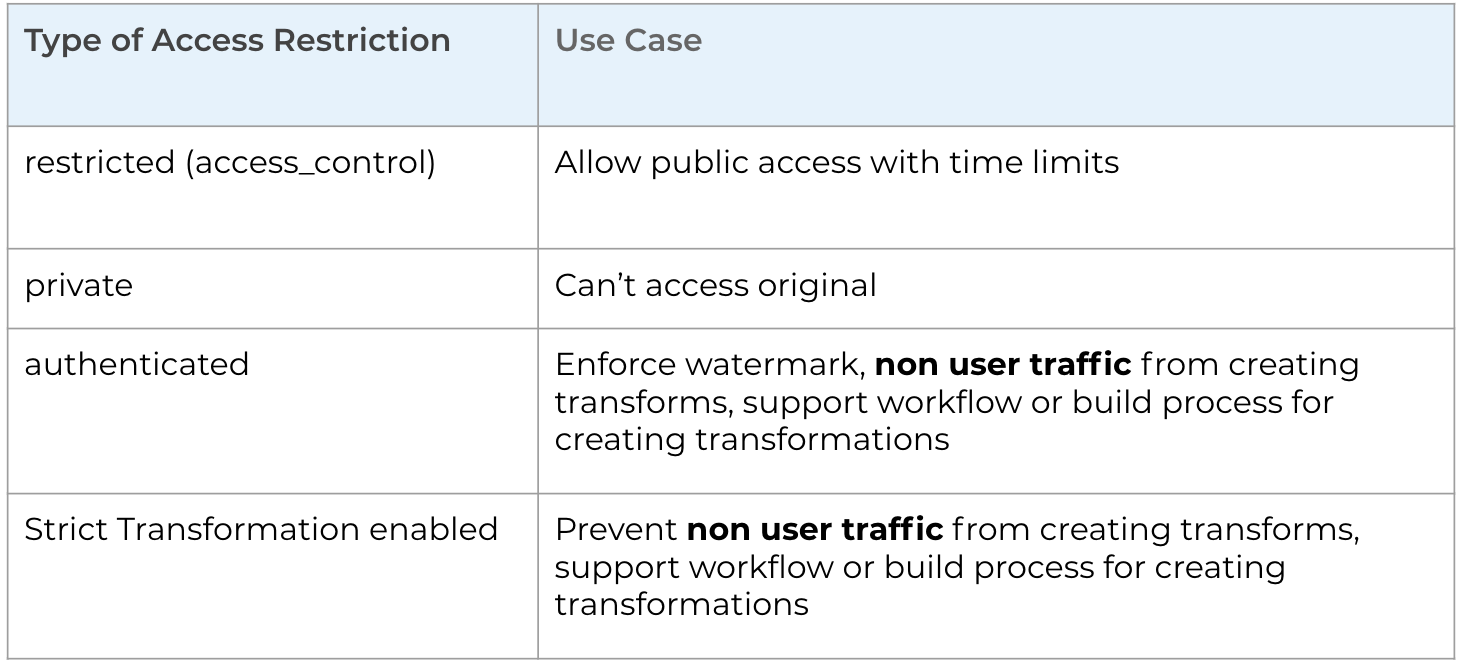Use Cases
We'll review the use cases for each of the access control methods we've discussed. First it's good to point out that all of these methods are available to customers with a free account. If you have a paid account, this can open the way for some additional access control methods including using cookies and tokens.
Cookies and Tokens
The chart below compares features offered by each of the three major access control methods: signing, tokens and cookies. Using access tokens requires a private CDN and using cookies requires a CNAME. If you are interested in using cookies or tokens, contact support@cloudinary.com to get help setting it up.

Review Use Cases
The chart below summarizes the access control methods that you have learned to implement in this module. The access_control option is the only one of the methods available to customers with free plans that want to control access by time.
The private is intended for customers who don't want the original image accessed. This could in a situations where all assets should be served as watermarked. However, if you want to enforce watermarking, you would need to upload the asset as authenticated, or a user could add the a0 transformations and see the asset as it would appear in its original state.
Enabling the strict transformations flag is useful for preventing non-user traffic from creating transformations. It is often used in work flows or build processes for creating transformations. We know that we can still create transforms using named transformations or eager explicit transformations even with strict enabled.

Strict Transformations Disabled
Don't forget to disable strict transformations as you continue through to the next section!